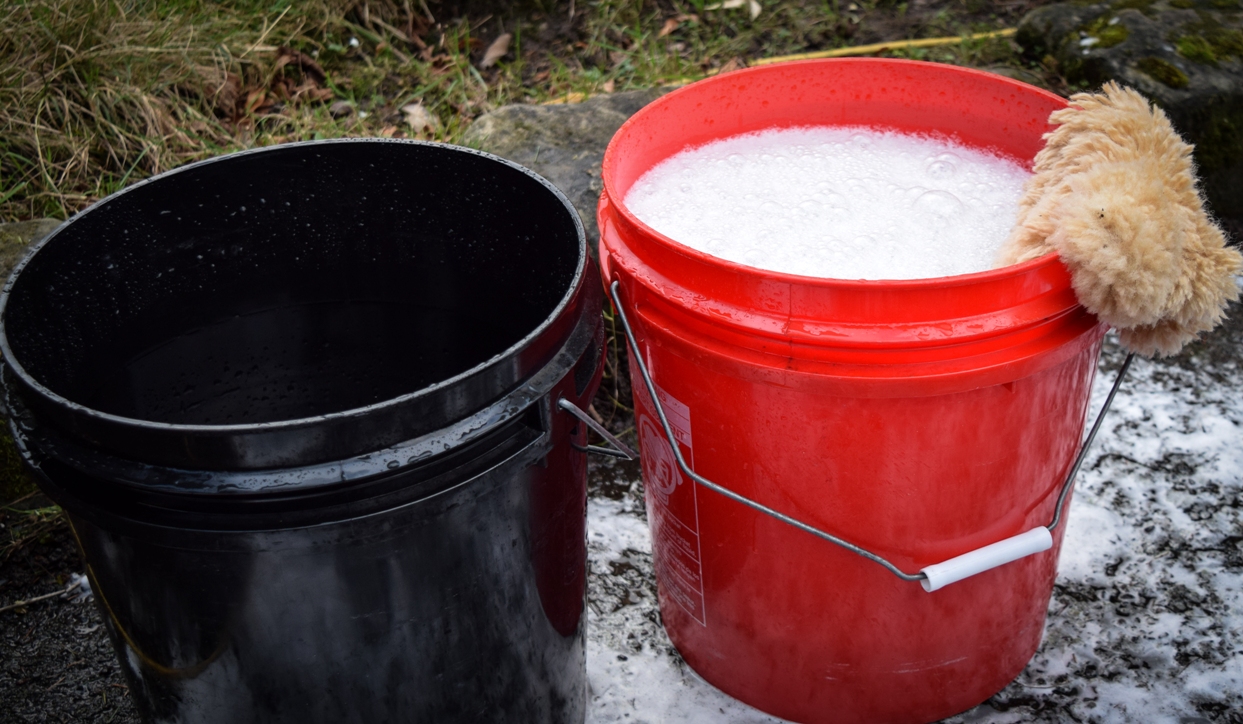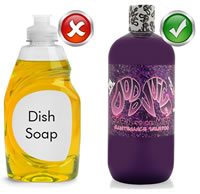Safe Wash Method

Is there really a right way and a wrong way to wash your car? In the eyes of a detailer answer to this is yes. From the equipment you use to the technique, making simple changes can transform the appearance of your vehicle.
As a starting point, look at the cloths that you use. Swap a traditional sponge and chamois to a lambswool or chenille mitt. When choosing a shampoo, only use products designed for automotive application – dish washing liquid is not suitable. Equally, if you are not looking to remove the existing protection on a vehicle, be that a wax or sealant, use a pH neutral product.
Ideally you will need three decent-sized buckets of at least 15 litres – and all equipped with a grid in the base to trap grit. The first wash bucket should be filled with warm water and your chosen shampoo. The second ‘rinse’ bucket should be filled with water alone, and the third bucket – for your wheels – should have a suitable wheel cleaning solution at the recommended concentration.
Do consider a pre-wash stage – this usually involves snow foam and removes the larger dirt particles while also loosening other contamination making it easier to remove during the main wash. You will need a snow foam lance or pump-sprayer, but both can be sourced cheaply. We suggest applying snow foam first to a dry car, allowing it to dwell for around ten minutes, then rinsing off. The pre-wash is also a good opportunity to make a start on the wheels, applying a wheel cleaner prior to the snow foam, then rinsing both off together.
Once you have completed the pre- and main- wash stages, consider applying a citrus cleaning solution to intricate areas such as trim and badges. Agitate the solution with a soft-haired brush, then rinse the whole car.
A lot of paint damage is often caused by the drying stage – but this can be avoided with the correct equipment and technique. Use an absorbent microfibre drying towel, place it on the car, gently pat it, then remove in a single smooth motion. Continue around the car in overlapping stages, and repeat if required. Do not rub the car dry – though it may appear clean, there is likely still to be some contaminants that could mark the paint.
A basic but thorough wash on a medium sized, moderately dirt car can easily take over an hour – we always recommend taking your time and doing it properly as paint damage from improper wash technique is the most common cause of paint damage we see.
More information on the correct washing and decontamination processes are in issues 1 and 4 of the Pro Detailer Magazine, and there is a big step-by-step guide in the Waxstock 2016 Show Guide.






